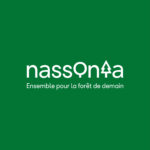Nassonia
Rewilding the forest of Saint-Michel-Freyr
Nassonia is a project of co-management of the public regional forest of Saint-Michel-Freyr by Walloon region (the Nature and Forest Department of the Walloon Public Service) and the Pairi Daiza Foundation. It has the ambition to implement an innovative management of species and natural habitats to make this forest more resilient. Nassonia wishes to become a laboratory open to researchers in a large range of topics and to bring together the diverse and complementary skills of many actors around a common subject: the forest and its future. The forest will remain (as it is today), largely opened to walkers to share its exceptional character and invite them to live a powerful experience. This forest plays a role in raising awareness of the importance of this ecosystem.One of the clearest targets of Nassonia is to offer the natural processes all the possibilities to live themselves, to increase the feeling of nature in this forest for visitors and to increase the possibilities for natural habitats to host a large panel of species
1. A biodiversity hotspot : To promote a forest with a high degree of naturalness, rich in biodiversity, self-sustaining
2. An enchanting forest : Enchanting to reconnect human beings to nature
3. A laboratory forest : Creating together the forest of tomorrow: a human, scientific and cultural laboratory
4. A forest in economic transition : Inventing a new economic model for the forest: a laboratory for economic sustainability
5. A forest that shines : Acting globally with the actors of the surrounding concentric circles
6. Creation of a future National Park

Nassonia is a project of co-management of the public regional forest of Saint-Michel-Freyr by Walloon region (the Nature and Forest Department of the Walloon Public Service) and the Pairi Daiza Foundation. It has the ambition to implement an innovative management of species and natural habitats to make this forest more resilient. Nassonia wishes to become a laboratory open to researchers in a large range of topics and to bring together the diverse and complementary skills of many actors around a common subject: the forest and its future. The forest will remain (as it is today), largely opened to walkers to share its exceptional character and invite them to live a powerful experience. This forest plays a role in raising awareness of the importance of this ecosystem.One of the clearest targets of Nassonia is to offer the natural processes all the possibilities to live themselves, to increase the feeling of nature in this forest for visitors and to increase the possibilities for natural habitats to host a large panel of species

1. A biodiversity hotspot : To promote a forest with a high degree of naturalness, rich in biodiversity, self-sustaining
2. An enchanting forest : Enchanting to reconnect human beings to nature
3. A laboratory forest : Creating together the forest of tomorrow: a human, scientific and cultural laboratory
4. A forest in economic transition : Inventing a new economic model for the forest: a laboratory for economic sustainability
5. A forest that shines : Acting globally with the actors of the surrounding concentric circles
6. Creation of a future National Park


